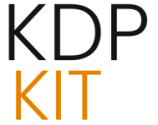
Technological Integration and the New Publishing Infrastructure
The technology stack available to independent creators in 2025 has evolved light-years past simple distribution platforms. Today’s toolkit includes sophisticated, self-owned infrastructure designed for building, marketing, and analyzing an author business—all while maintaining a crucial independence from legacy systems.
Embracing Author-Centric CMS and E-Commerce Solutions
The deployment of platforms like **Ghost** for content hosting, combined with integrated payment processors like **Stripe**, empowers an author to operate as a standalone, fully functional digital enterprise. This self-sufficiency is a strategic hedge against the constant adaptation required by the fluctuating terms of service or opaque monetization policies of centralized social media or e-commerce giants. Ghost, in particular, has doubled down on the “own your platform” philosophy in its August 2025 Version 6.0 update, making native analytics and decentralized social web syndication (via ActivityPub) far more powerful. Crucially, Ghost takes **0% platform fees** on paid subscriptions, contrasting sharply with competitors who often take a substantial cut of creator revenue. For creators whose primary goal is ownership and maximizing net revenue, this choice is emblematic of the D2F shift. For e-commerce—the point of sale for those artisanal goods—tools like Shopify or Payhip, integrated with Stripe, ensure the creator handles the transaction directly, controlling the customer data and the final presentation of the offer. This direct relationship is the key to maximizing the lifetime value of a superfan.
The Role of Data Analytics in Informed Creativity
Successful independent authors today are not simply artists; they are sharp analysts of their own business. Utilizing tools that track sales, reader engagement metrics (like newsletter open rates and click-throughs), and conversion rates allows for iterative, evidence-based improvements in both the creative output and the marketing presentation. Even for a project like Mendo’s, which emphasizes artistic intent and slow craft, data informs *when* and *how* to communicate updates—ensuring maximum impact and minimal imposition on a loyal follower base. For example, native analytics in platforms like Ghost allow authors to see which articles convert readers into paying members most effectively, guiding content strategy in real-time.
The AI Co-Pilot: Enhancing Efficiency Without Surrendering Authorship. Find out more about Direct-to-Fan publishing model expansion 2025.
Artificial Intelligence has firmly established itself as an indispensable workflow assistant, *not* a replacement for the human creator. The trend line in 2025 shows AI being actively deployed for tasks that save significant capital and time, particularly for solo operators managing the multitude of facets in a modern career. This includes:
- Generating preliminary, optimized marketing copy for a book’s landing page.
- Optimizing back-matter text and book descriptions for platform searchability (SEO).
- Automating initial drafts of social media engagement posts.. Find out more about Direct-to-Fan publishing model expansion 2025 guide.
The time saved by offloading these high-volume, low-creativity tasks is directly reinvested into the high-leverage activities that only a human can perform: writing the next manuscript, designing a unique physical reward, or hosting a private Q&A for “BOLD MEMBERS.”
Format Diversification and The Audiobook Revolution
To capture the entirety of the reading public in 2025, a single print or eBook format is no longer sufficient. The market demands flexibility across all consumption habits, with audio commanding not just growth, but a significant percentage of the overall market share. The global audiobook market is valued at an estimated **USD 10.88 billion in 2025**.
The Continued Surge in Digital Consumption
The convenience of eBooks ensures their sustained popularity, offering global, instantaneous access at a consumer cost that often undercuts physical print. This format remains the essential entry point for many new readers discovering an author’s back catalog or introductory material. Digital storefronts are increasingly globalized, representing an undeniable growth factor for independent publishing beyond the traditional primary markets.
AI Narration Making Audio Accessible. Find out more about Direct-to-Fan publishing model expansion 2025 tips.
The proliferation of high-quality, synthetic voice narration technology has fundamentally democratized the production of audiobooks. This trend is profoundly impactful for independent authors who previously lacked the capital to hire professional voice talent or the hundreds of hours required to record themselves. Independent authors are reportedly scaling faster with AI narration because **recording costs are reduced by 80–90%** compared to hiring human narrators, and production timelines shrink from months to days. This allows for the rapid conversion of existing written content into a completely new, highly profitable revenue stream, directly capturing consumers whose primary consumption method is auditory. While some consumer resistance remains, the efficiency of AI is making audio an essential, accessible format for every catalog in 2025. Actionable Takeaway for Audio: If you are a solo author, investigate AI narration for your backlist. If you are launching a new premium title, consider a hybrid approach: high-production human narration for the flagship edition and a lower-cost AI version for rapid, wide distribution across all platforms.
The Aesthetics of the Tangible: Book Design as a Marketing Asset
In a world saturated with digital content, the physical book itself is undergoing a design renaissance. Quality and unique aesthetic features are being deliberately employed as premium differentiators—they are now a *marketing asset* in and of themselves.
Elevating Physical Production Values
The meticulous attention to detail in Mundo Mendo Book ONE—the specific size, the full-color printing, the intentional involvement of a peer like Craig Mod in an advisory or introductory capacity—signals a clear trend: the book’s physical presentation is as much a statement as its content. This caters directly to the segment of readers seeking high-quality, collectible objects that visually reflect the high value they place on the author and the work itself. This contrasts sharply with the loss-leader eBook. What defines this elevation?
- Materiality: Using heavier paper stock or unique finishes that demand to be touched.
- Presentation: Moving beyond standard trade paperback dimensions to create a specific shelf presence.. Find out more about Membership model for author recurring income strategies.
- Significance: Incorporating elements like specialized signatures, numbering, or artisan case-making.
The Trend Toward Special Features and Custom Finishes
Authors are increasingly investing in features that cannot be replicated in standard, digitally-printed mass-market paperbacks. This includes techniques like sprayed edges (or “spredges”), bespoke endpapers, and unique binding treatments. These techniques, once reserved for legacy fine press editions, are now bleeding into genre fiction like romantasy and thrillers, and into unique memoir and art-focused projects like Mendo’s. Why? Because these unique physical properties are what justify the premium price point for a direct sale and what drive the social sharing that fuels organic discovery in 2025. A reader is far more likely to post a photo of a book with custom-sprayed edges on social media than a standard paperback.
Community-Driven Marketing: Authentic Engagement Over Broadcast Advertising. Find out more about Direct-to-Fan publishing model expansion 2025 overview.
While massive retailers like Amazon still drive significant sales volume, the most effective, high-conversion marketing in 2025 is rooted in authentic, ongoing community engagement rather than episodic, high-cost advertising blasts. Influence has demonstrably shifted from critics to dedicated communities.
The Primacy of the Email List and Newsletter
The author’s email list remains the single most reliable asset, providing a direct, unmediated channel to the most invested readers—the ones who have already signaled their intent to support. Newsletters, whether hosted on centralized platforms like Substack or managed through self-owned software on platforms like Ghost, are the central mechanism for announcing pre-sales, sharing behind-the-scenes content, and driving high-conversion traffic to direct-sales pages. When the goal is converting a “reader” into an “investor,” the personal connection of a newsletter is unparalleled. Practical Tip: Frame your newsletter not as a sales flyer, but as a production diary. Update your subscribers on printing proofs, share design mockups, and ask for opinions on cover treatments. This makes them co-creators.
Leveraging Niche Platforms for Deep Connection
Beyond the broad, noisy broadcasts of legacy social media, genuine success is increasingly found in niche forums, dedicated book clubs, and ephemeral community platforms like Discord, where readers gather around highly specific interests. Luis Mendo’s membership site, structured to support the creation of *Mundo Mendo Book ONE*, functions in essence as a highly curated, paid-entry book club and production studio. This creates an environment of shared purpose that powerfully fosters deep loyalty and, critically, genuine evangelism for the work. When fans talk to *each other* about the project—the fan-to-fan dynamic—the marketing becomes self-sustaining.
Navigating the Future: The Hybridization of Publishing Paths. Find out more about Membership model for author recurring income definition guide.
The industry is definitively moving away from the old binary choices (traditional vs. self) toward a vast spectrum of flexible, hybrid arrangements. Authors are now empowered to cherry-pick the best support services available to them, regardless of the structure.
The Growth of Partnership Publishing Models
New intermediary entities are surging in popularity in 2025. These companies offer essential services—professional editing, robust marketing packages, or wider distribution access—but operate on a *co-investment* model, such as a fifty-fifty profit split or a fee-for-service structure, rather than demanding the ownership of rights that traditional contracts require. This offers a crucial bridge for authors who desire professional polish and scale but balk at the loss of creative control inherent in older systems. Authors are selectively choosing partners who enable their D2F efforts rather than replacing them.
Blurring Lines Through Strategic Alliances
Even established hybrid and high-end self-publishing service providers are forging strategic alliances with traditional distribution networks. This grants their author-centric projects the benefit of wider, if selective, retail placement. This suggests a future where author-centric D2F models gain mainstream visibility *without* sacrificing their foundational autonomy or their direct, high-margin relationship with their core paying supporters. The key lesson is that you can use outside services for *scale* while maintaining your *soul* on your own platform.
Conclusion: Writing the Next Chapter on the Author’s Terms
The story of Luis Mendo self-publishing his meticulously crafted Mundo Mendo Book ONE in the autumn of 2025 is not just a footnote on a blog; it is a powerful microcosm of a vast, ongoing literary revolution. It champions technological literacy—choosing platforms that offer ownership—prioritizes audience intimacy through self-owned channels, embraces the economic power of the dedicated supporter through membership models, and elevates the physical book to an object of art and patronage. The landscape today rewards the creator who is savvy enough to utilize modern tools while remaining uncompromisingly focused on the integrity of their work and the direct, transparent relationship with the people who keep their creative engine running. The path forward for authors is clear: it is a landscape defined by **personal sovereignty, relentless innovation, and the ongoing commitment to building a career not on external approval, but on internal vision backed by a loyal community.** Actionable Final Takeaways:
- Audit Your Platform: Are you building your house on rented land (social media) or owned land (email list/CMS)? Migrate focus to owned assets like your newsletter and membership site.
- Design an Investment Tier: Create one physical product so desirable (limited run, specific craft, unique contributor foreword) that your best fans *must* buy it on pre-sale to secure a copy and fund production.
- Master the Middleman Cut: For every platform you use (e-commerce, newsletter hosting), calculate the platform fee. Prioritize solutions (like Ghost’s 0% fee structure) that maximize your net revenue from your core investors.
What specific “artisanal reward” are you planning to offer your most dedicated patrons in 2026? Share your strategy in the comments below—the conversation around building real creative sustainability is one we need to keep having.







